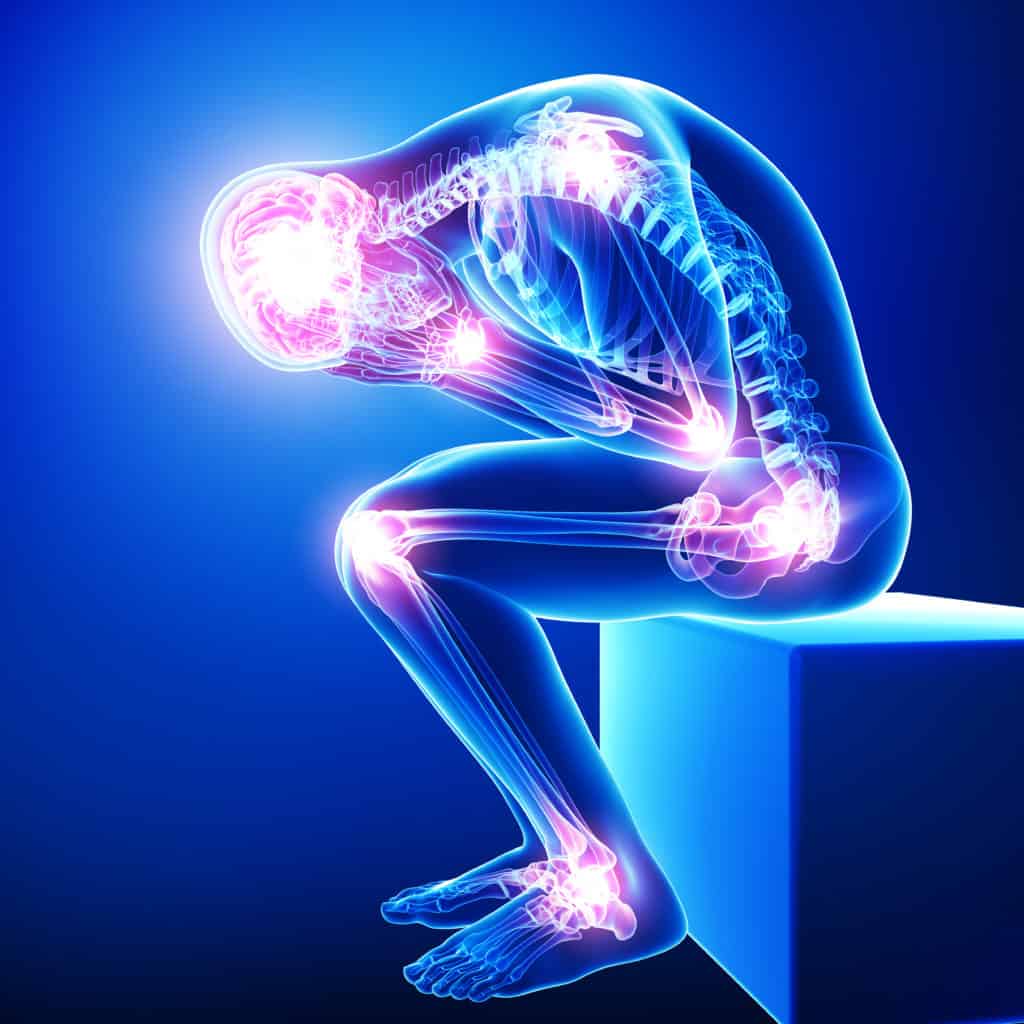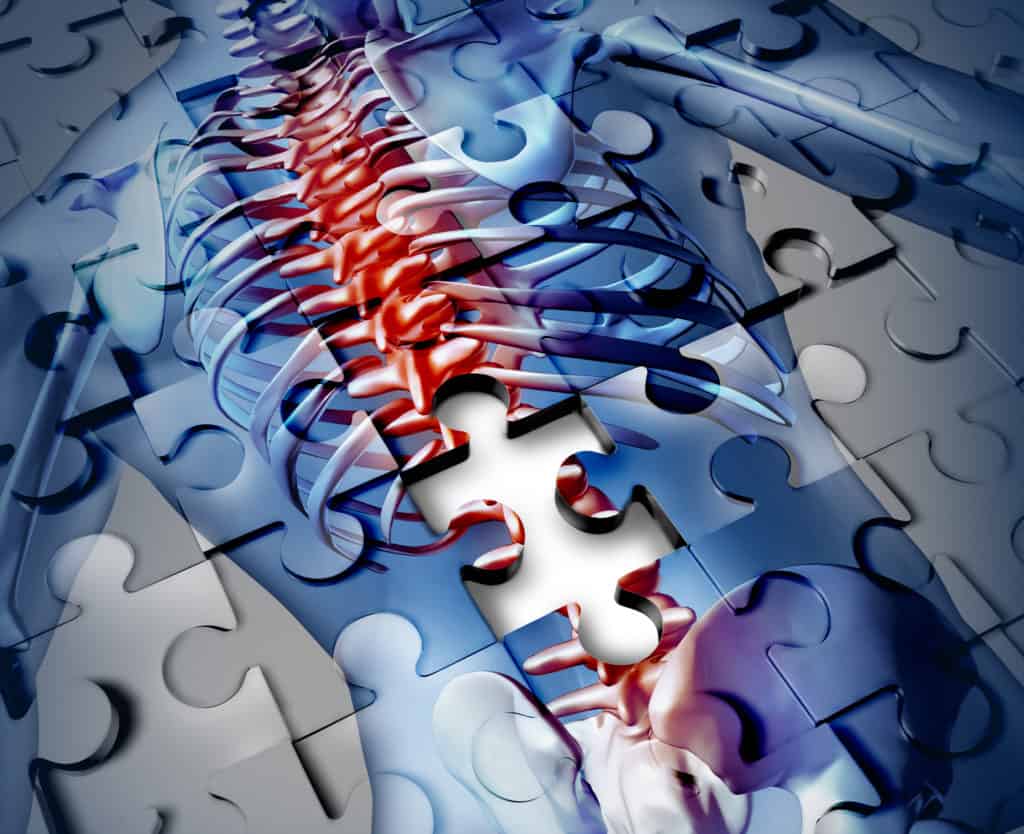When you suffer from a chronic pain disorder like myofascial pain syndrome, we know it can be lonely and confusing. We’ve been there.
When there is something wrong with your body that affects your daily life – you want answers. You’re in severe, often debilitating, pain and want to know how long it will last. With chronic pain and myofascial pain syndrome, these questions often go unanswered, leaving patients feeling frustrated and desperate for a solution.
It’s frustrating, too, because you can be doing all the right things – eating well, staying hydrated, taking regular exercise, meditating, and controlling stress. Making all the right lifestyle changes, but still, the pain hammers on.
It’s like a sick joke. Except, many patients go through a dark time and battle with depression while managing chronic pain, so it’s no joke. We don’t see anything funny about chronic pain.
You can also become quite alienated from friends and family because socializing and sitting (or standing) for long periods is too painful. Nobody understands if they haven’t endured chronic pain themselves, either. Hence, it’s often easier to stay home alone than try and explain your desire to go home early. Balancing pain with life’s necessities – commuting, working, chores, food shopping – can take a huge toll on mental health and leave motivation levels at an all-time low.
Unlike a broken arm that your Doctor, friends, and family can see with their own eyes (without x-rays or MRI scans), myofascial pain is more problematic for our loved ones to understand and even more challenging for medical doctors to diagnose. This scenario leads to patients being dismissed, because there is no visible or diagnosable cause for the pain they report.
At Release Works of Salt Lake, we know it’s not in your head. Such a claim isn’t sales talk, either.
I suffered from chronic back pain, headaches, IT Band Syndrome, and Plantar fasciitis before training as a Myofascial Release Therapist. The pain made my life a misery until I discovered this transformational therapy. Before we met, my wife, too, endured years of severe back pain and stiffness without any diagnosable cause – and was told by a Chiropractor never to get pregnant. But after myofascial release therapy and the proper realignment of her pelvis, she was able to give birth to our three children, naturally, without medication.
For us, Myofascial Release Therapy has been a wonder treatment. Once upon a time, we thought we would have to live with the pain forever, which is why we now dedicate our lives to sharing our honed Myofascial Release Therapy skills with other chronic pain sufferers.
In this blog, we take a deep dive into myofascial pain syndrome and the possible treatments. We explore whether or not myofascial pain can be cured and bring together a range of information on the subject to dissect.
What is Myofascial Pain Syndrome?

Myofascial pain syndrome is a chronic pain disorder that presents as ongoing pain that feels like it’s deep within your muscles. It may be chronic, continuous pain or pain that reoccurs or worsens at regular or sporadic intervals.
Myofascial pain presents itself in various locations in the body (that are often referred to as trigger points). It may be at or around the site of an old injury, surgery, or scar tissue. Still, not exclusively – it could be in a completely unconnected area of the body. You probably feel pain at these points with the application of minimal pressure.
What’s helpful to understand, however, is that the pain is there for a reason. Your body is smart – it works to regain equilibrium at all times but it’s not perfect. Sometimes, it requires a little support to heal more effectively.
“Pain serves a purpose. Without it, you are in danger. What you cannot feel, you cannot take care of”
– Rebecca Solnit
These pain sites most commonly cluster around areas related to posture and stabilization, such as the back, pelvis, shoulders, and neck. However, it can be challenging to pinpoint the root cause of the problem because patients sometimes feel the discomfort elsewhere when we apply pressure to the area of discomfort. So, just because you have pain in your neck, this may not be the main problem. Finding the real source of the pain takes time and a little more investigation. However, in simple terms, the pain you feel is a result of restrictions in your myofascia.
Myofascia is strong, supple tissue that wraps around our muscles and bones. Myofascial pain syndrome – and the pain you feel – occurs when these myofascial tissues are tight and unable to move as they should due to those restrictions.
Reduced mobility, muscle weakness, problems sleeping, headaches, awkward posture, tinnitus, and extreme tiredness (to name but a few conditions), often accompany the chronic pain that myofascial pain syndrome brings to the party.
How To Treat Myofascial Pain

Although chronic pain can feel endless and the lack of information around myofascial pain syndrome is incredibly frustrating, several remedies are available beyond the established treatments for myofascial pain syndrome. Treatments such as physical therapy, light therapy, injections into ‘release points’, and medication. The most effective of these treatments is Myofascial Release Therapy, which is causing huge ripples in healthcare and the future of medicine for chronic pain and myofascial pain syndrome.
This revolutionary treatment offers a fresh perspective on the causes of chronic pain and how to treat it.
Myofascial Release Therapy is a non-invasive, natural treatment that focuses on using movements that restore properly fluidity and mobility to the myofascia. The intention is to enable the fascia to regain its original flexibility, hydration, and strength. The treatment has proven successful in practice, and practitioners see great results amongst myofascial pain syndrome sufferers.
The treatment sometimes is confused with massage because, like massage, it helps you feel more relaxed and de-stressed. Yet, myofascial release therapy goes so much further than traditional massage. Unlike the transient benefits of massage, myofascial release works long term and aids blood circulation, oxygen levels, the lymphatic system, and helps your body to move the way it’s meant to.
As good as the treatment is, like any other therapy, we deliver it as a treatment, not a guaranteed cure. However, it is a treatment that offers positive, sometimes miraculous, results where many other types of therapies for myofascial pain syndrome have failed.
We need to rule out broken bones, degenerated discs, damaged ligaments and tendons, and other chronic pain reasons that require medical treatment. Every treatment affects individuals differently, too, so it is always advisable to speak to your medical practitioner, who knows your full medical history, first. But if you’re one of the 69 million+ Americans who live with chronic pain with no identifiable cause, in that case, Myofascial Release Therapy might be the answer to your prayers.
Is Myofascial Release Therapy Right For Me?

In answer to whether myofascial release therapy can cure myofascial pain, our personal and resounding answer – as both practitioners and patients – is most definitely yes; even if the scientific research is slow to catch up. However, the medical community is starting to become aware of the benefits of this treatment, mostly driven by growing demand and patient results.
Until recently, medical research paid little attention to complementary therapies for chronic pain, but that is changing rapidly. Thankfully, we can all look forward to much more research into alternative treatments and chronic pain disorders in the future. We can now consider the effectiveness of myofascial release therapy within the context of research into massage and chiropractic treatments. These studies evidence the effectiveness of applying myofascial release and chiropractic treatments for patients experiencing ongoing back pain following sports injuries.
Myofascial release therapy offers a welcome alternative to traditional methods for treating myofascial pain syndrome. No treatment can claim to be a complete cure, but for many sufferers of myofascial pain syndrome, myofascial release therapy is a powerful treatment that delivers numerous favorable results for their health and wellbeing. That can only be a good thing!
In answer to whether Myofascial Release Therapy is right for you, the great thing is that it is a non-invasive natural treatment. It works with and supports your body to heal itself, so it is not injurious. As long as you have ruled out more serious causes for your pain, we see no reason why Myofascial Release Therapy won’t benefit everyone.
Yet, if you’re still not sure, why not book a call to talk to one of our therapists? Or, if you’d prefer to meet our therapists and view our facilities in person, then why not book a free 30-minute discovery session to explore whether it’s the right treatment for you?
We would be more than happy to explain how the treatment works and elaborate on the health benefits of Myofascial Release Therapy. We look forward to hearing from you!

